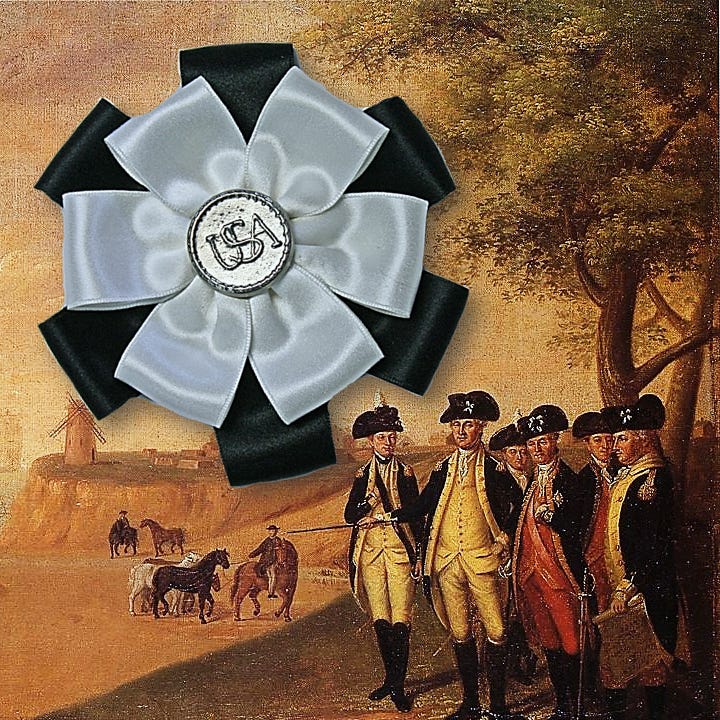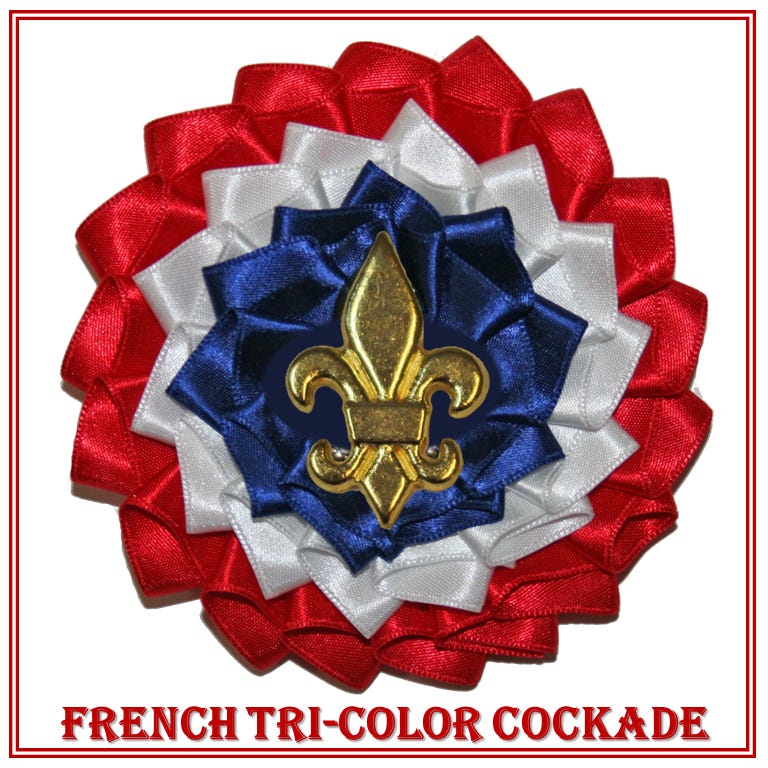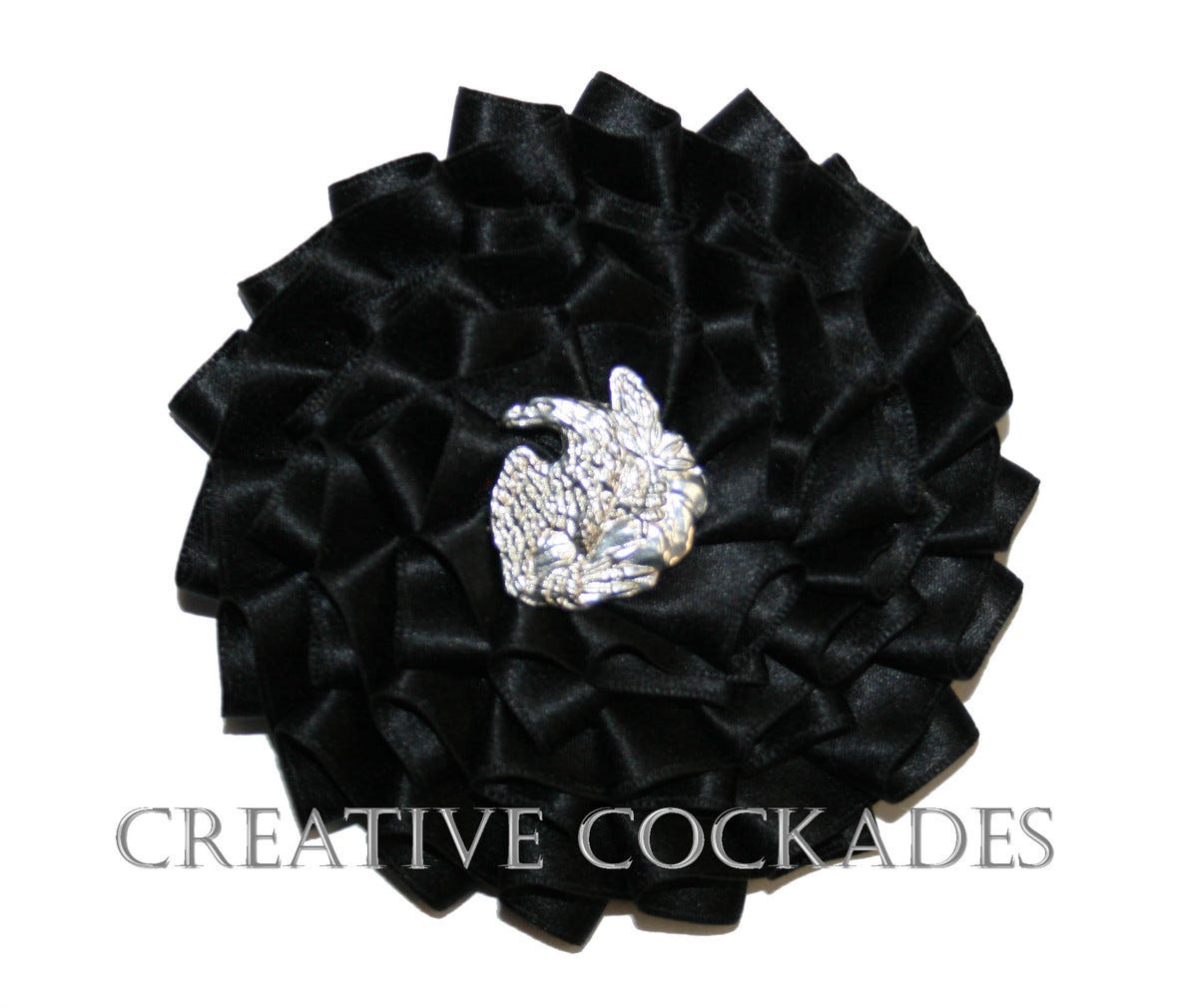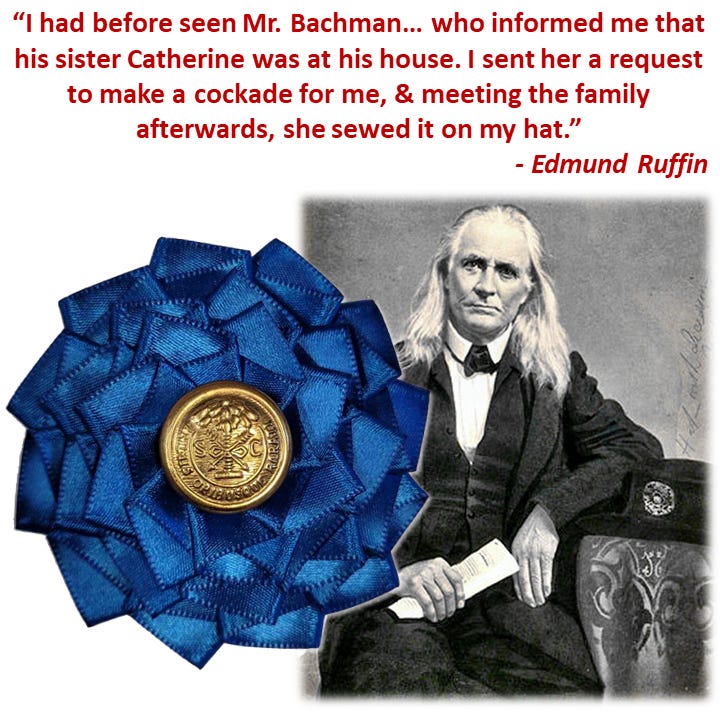American Independence Cockades
A quick look at American history - and American cockades - shows that Americans love independence!
In fact, a lot of the cockades I make for American history are centered around movements for gaining or protecting independence. Here's a quick tour through American history via her independence cockades!
Alliance for Independence
America became an independent nation when we seceded from Great Britain on July 4, 1776.
As a ragtag bunch of colonials, we needed allies in our battle with the world's then-superpower. The United States signed the Treaty of Alliance with France on February 6, 1778 and French troops entered the American War for Independence. At first their participation was mostly on the seas but by 1779 they were landing troops on American soil.
The national cockade of France was white. Traditionally, Americans had worn British black cockades. In 1780, as a symbol of the two nations’ alliance, General George Washington established that the American military cockade would be an Alliance Cockade – black with a white center. Many of the French troops likewise wore an Alliance Cockade of white with a black center.
Either way, the cockades said: Independence for the new United States!
Exporting Independence
Just a few years after we gained our independence, our ally France had an independence revolution too.
Shortly after the Bastille fell, the tri-color cockade became the symbol of the French Revolution and later of the Republic. The Marquis de Lafayette (who also fought in the American Revolution) combined red and blue, the colors of Paris, with the French royal color of white.
Eventually the tricolor came to America and took the place of the American black cockade.
Now both countries celebrate independence with red, white and blue!
Defending Independence
In 1812, the British decided to see if we really meant it when we seceded. As the old song says, "We fired our guns but the British kept a-comin'...."
American troops of the 1800s were much advanced from the ragtag colonial army that George Washington had to contend with. Uniforms, rank, and pay were far more standardized - and so were the cockades.
An eagle had been added to the original black British cockade to "Americanize" the design. Regulations from Secretary of War James McHenry said: "All persons belonging to the army, to wear a black cockade, with a Small white Eagle in the centre. The cockade of non-commissioned officers, musicians and privates, to be of leather, with Eagles of tin."
The 1812 eagle holds both arrows and an olive branch. The message: We're ready for war or peace.
Nullification for Independence
As the fledgling nation grew, so did the factions and tensions between regions. Accusations flew between North, South, East and West, each insisting the other was taking advantage of the rest of the country.
When the "Tariff of Abominations" was passed in 1828, a movement grew in South Carolina to nullify the law which imposed such harsh regulations on South Carolina trade.
In 1832, South Carolina nullified the tariff. Congress promptly passed the Force Bill authorizing the president to send troops. But - they also passed a compromise tariff! So South Carolina withdrew their nullification of the 1828 tariff.
However, they did nullify the Force Bill too. Just to make their point clear. :)
The symbol of nullification in 1828-1833 was a blue cockade inherited from the anti-government Gordon Riots in England a few years earlier. It was usually adorned with a South Carolina militia button.
The point was clear and concise: No government tyranny or we fight!
Second War of Independence
An uneasy peace reigned for several decades after the Nullification Crisis, but the tensions were still there. They finally boiled to the surface with the election of President Abraham Lincoln, who won with a majority of the electoral vote - but not the majority of the people's vote.
South Carolina was once again the leader and seceded from the Union in December 1860. Two of the first flags associated with the newly independent state were red and white. Thus, red and white came to be known as the colors of the Confederacy.
One source states that the white symbolized truth and purity and the red symbolized sacrifice. Many secession cockades across the South were made from red and white colors.
Though the South eventually lost the war, they made their point: We will sacrifice everything for independence.
Preserving Independence
As the now-united USA proceeded into the 20th century, turmoil churned around the globe. When it finally exploded into the first World War, America was ready with support for nations fighting for their independence.
A second World War pulled us even further into global affairs. Our money, men and munitions poured into the effort to push back tyranny and oppression.
Across the globe, the American red, white and blue symbolized the nation that fights for freedom - for everyone.
American Cockades: Our Heritage of Independence
Americans have a right to feel proud of our heritage. Not only did we fight for our own liberation from tyranny, we have liberated thousands of others around the world.
As we celebrate this Independence Day (hopefully with a cockade!) let's remember our history and uphold the tradition of freedom for future generations!
THREE CHEERS FOR THE RED, WHITE AND BLUE!
SALE!
This week, Monday-Saturday, enjoy 10% off your order when you use the coupon code JULY4 at checkout!
Have you subscribed? Want the Cockade Column to come right to your inbox every week?
You can sign up by clicking the button below and filling in your email address. Also feel free to forward this Column to your friends... they may want to subscribe as well!
Thanks for reading... see you next week!
Regards,
~Heather Sheen













